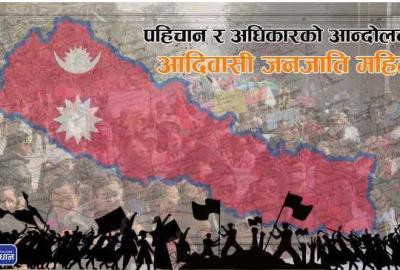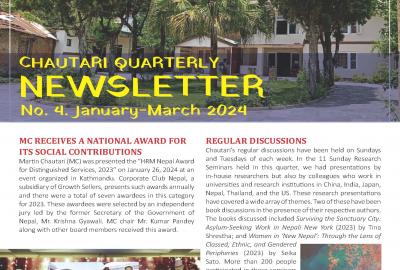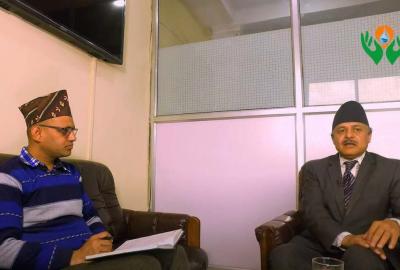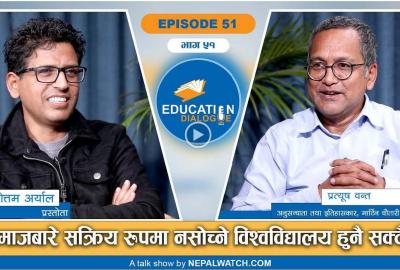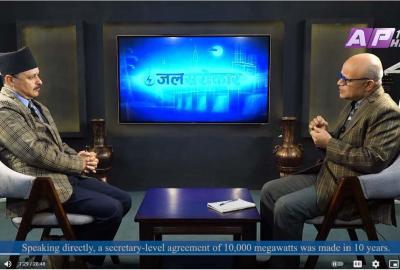Given the irregularity of publications, they do not make the research landscape robustly plural.

Around the time when I finished my PhD in 1996, most academic journals (in the social sciences and humanities) that were published from Nepal were published from Kathmandu Valley. Very few academic institutions outside of the valley had ventured to publish such journals. Twenty-seven years later, that is no longer the case. Academic journals are now being published from virtually every significant city of the country. Cities like Pokhara and Biratnagar have seen the publication of many such journals. Smaller (in terms of academic capital) cities too have joined the act. In recent years, academic journals have been published from institutions located in Ilam Bazaar, Bhadrapur, Dharan, Dhankuta, Birgunj, Hetauda, Bharatpur, Kawasoti, Bhairahawa, Butwal, Gajuri, Gorkha, Besishahar, Baglung, Nepalgunj, Surkhet, Tikapur, Dhangadhi, Mahendranagar and other locations. These new journals, many of them available in the Nepal Journals Online portal (nepjol.info), have apparently boosted the institutional and geographical plurality in the journal publication landscape in the country.
How is this plurality being realised? There are many aspects of this phenomenon, but the case of Pokhara gives us one important insight. The 2016 Education Management Information System Report prepared by Prithvi Narayan Campus, a constituent college of Tribhuvan University (TU), lists the eight departments that it then had under its Faculty of Humanities and Social Sciences: English, Nepali, Economics, Geography, History and Culture, Political Science, Sociology/Anthropology and Rural Development, and Population Studies. Later in the same report, we find a list of all the journals published by its various departments. When you compare the two lists, it becomes clear that each of those eight departments then published a separate journal. They are, respectively, The Outlook: Journal of English Studies, Prithvi Bangmaya, Economic Literature, The Himalayan Geographers, Historia, Journal of Political Science, Himalayan Journal of Sociology and Anthropology, and Demographic Forum. If you count all the journals that have been published from Prithvi Narayan Campus and other educational institutions in Pokhara, the number exceeds 30. That is quite impressive on face value.
Same kind of growth has also been seen in the context of specific disciplines. For example, there has been an impressive growth in the number of sociology and anthropology journals published from different institutional locations since the first of such journals Occasional Papers in Sociology and Anthropology was published by the then Central Department of Sociology and Anthropology of TU in 1987. More than 10 such journals have been published since then, three from institutions located outside of Kathmandu Valley.
Hence, one would have to conclude that the capacity to produce academic journals has spread to different parts of Nepal from its erstwhile concentration in Kathmandu Valley. If you take journal publication to be a proxy for some sort of research activity, then the above-mentioned facts indicate that knowledge production is being decentralised to a certain extent in Nepal. This is the good news.
Irregular journals
In theory, academic journals are supposed to be published regularly, say one or more times a year. When journals are regularly published over the course of several years, they become recognised platforms for academic discourse. However, longevity and regularity are two different things when it comes to Nepali journals.
Detailed data I have presented elsewhere shows that while some Nepali journals might have been around for many years, they are still very irregular. Except for a few journals, the ones published from Pokhara named above are also irregular. My detailed analysis of the sociology and anthropology journals published from Nepal, included as a chapter in the 2021 volume Practices of Sociology in Nepal, edited by Pranab Kharel and Gaurab KC, suggests that they too are no exception to this trend. Most of these journals are irregular in the sense that there is a discrepancy between their declared frequency and their real publication frequency. For instance, a new issue of the annual journal, Himalayan Journal of Sociology and Anthropology, has not been seen since 2016. Among the two editors who were mostly responsible for its management, one resigned from his professorial position at Prithvi Narayan Campus and the other went on a long doctoral research leave. Some of the other journals such as Occasional Papers and Nepalese Journal of Qualitative Research Methods have become defunct. The only regular journal in this group is the annual Dhaulagiri Journal of Sociology and Anthropology edited by its indefatigable chief editor Man Bahadur Khatri. Irregularity of our journals, then, is the bad news.
Influencing factors
Why is this so? More than 35 years ago, the American scholar of higher education and publishing in developing countries, Philip G Altbach wrote: “There is a tendency in many Third World nations for individual academic institutions to establish scholarly journals, which almost inevitably become limited in authorship and circulation to the sponsoring institution and its mailing lists. They are seldom able to develop a wider constituency or establish a national or international reputation.” Altbach’s observations are still valid for the case of Nepal.
Our journal production is clearly limited by the way in which they are conceptualised and executed as single department-specific productions. The eight departments in Prithvi Narayan Campus producing their own separate eight journals mentioned above exemplify this phenomenon perfectly. In most cases—there are some exceptions—these journals then suffer from the limitations of small editorial management teams and an inadequate supply of good research-based articles.
To put it more generally, internal political dynamics within professional entities of academics, namely departments and discipline-specific organisations, have majorly determined what those bodies have been able to do as organisational entities. Lack of internal collegiality in such entities has, more often than not, limited the collective capacity of such groups and debilitated the functioning of editorial teams from departments or discipline-specific organisations. Bereft of long-term collective collegial work culture (which needs to be built up over years), most of these journals then become irregular. They appear in print when one or more committed editors put together an issue; but when such editors are missing, no one can be sure when the next issue will be published.
At the moment then, our journal publication landscape appears plural in institutional and geographical terms; but given the rampant irregularity of these publications, they do not make the research landscape robustly plural. Effectively this means that the relative dominance of institutions based in Kathmandu Valley in terms of research production continues unabated. That is not good news if your idea of a federal republic includes robust institutional and geographical plurality in terms of knowledge production in the country.
What can be done? Those who establish and manage journals need to enhance their “catchment areas” of potential authors beyond their own departments or campuses. Universities and funding bodies like the University Grants Commission can provide incentives for journals that are edited by academics from multiple departments and institutions. Specific disciplinary bodies can also seek to produce journals that are really open to contributors in their disciplines from all over the country and beyond. Such ventures would have the potential to be regular in frequency provided they are adequately supported in the medium term. That scenario of plural knowledge production would be really good news for a federal Nepal.
A portion of this article is derived from Onta's article "(Almost) Always Occasional: The World of Sociology and Anthropology Journals Published from Nepal" in the volume Practices of Sociology in Nepal, edited by Pranab Kharel andGaurab KC (Vajra Books, 2021).
Published at : March 30, 2023
https://kathmandupost.com/columns/2023/03/30/for-a-plural-publication-landscape
